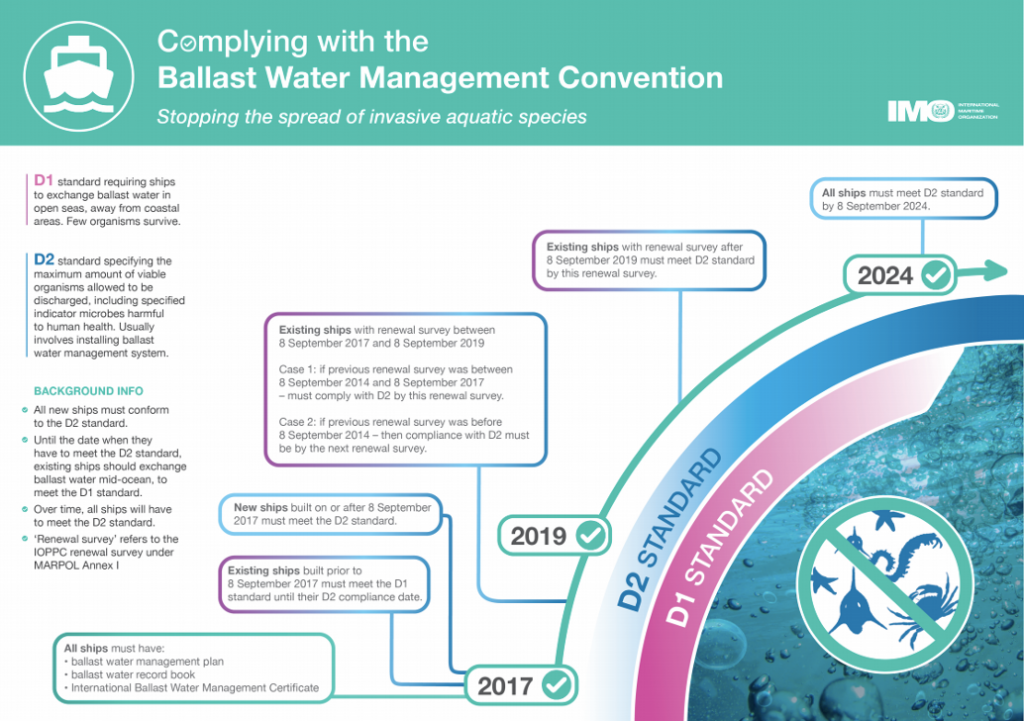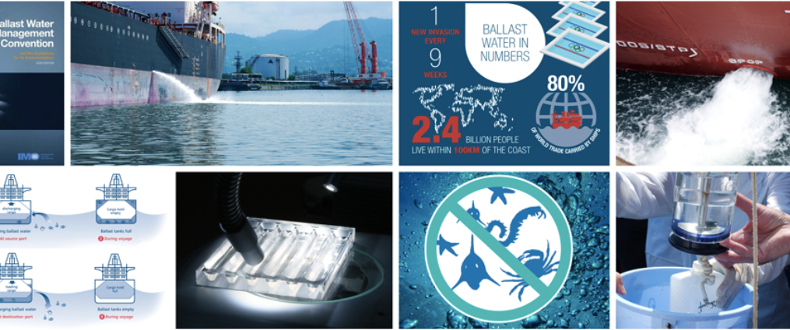The International Convention for the Control and Management of Ships’ Ballast Water and Sediments, 2004 (BWM Convention), entered into force globally on 8 September 2017.
Ballast water management – the control of harmful invasive species
Ballast water may be taken onboard by ships for stability and can contain thousands of aquatic or marine microbes, plants and animals, which are then carried across the globe. Untreated ballast water released at the ship’s destination could potentially introduce a new invasive marine species. Hundreds of such invasions have already taken place, sometimes with devastating consequences for the local ecosystem.
The International Convention for the Control and Management of Ships’ Ballast Water and Sediments (BWM Convention) was adopted in 2004 to introduce global regulations to control the transfer of potentially invasive species. With the treaty now in force, ships need to manage their ballast water.
Status of the BWM Convention
The BWM Convention entered into force on 8 September 2017.
BWM treaty requirements
Under the Convention, all ships in international traffic are required to manage their ballast water and sediments to a certain standard, according to a ship-specific ballast water management plan. All ships have to carry a ballast water record book and an international ballast water management certificate. The ballast water management standards are being phased in over a period of time. New ships must meet the ballast water treatment standard. Existing ships should exchange ballast water mid-ocean but they will need to meet the ballast water treatment standard by the date of a specified renewal survey. Eventually, most ships will need to install an on-board ballast water treatment system.
Approval of BWM systems
The BWM Convention requires that ballast water management systems used, to comply with the Convention, must be approved by the Administration taking into account the Guidelines for approval of ballast water management systems (G8).

What do ships need to do, now the treaty is in force?
From the date of entry into force, ships in international traffic are required to manage their ballast water and sediments to a certain standard, according to a ship-specific ballast water management plan.
Ships have to carry:
· A ballast water management plan – specific to each ship, the ballast water management plan includes a detailed description of the actions to be taken to implement the ballast water management requirements and supplemental ballast water management practices;
· A ballast water record book – to record when ballast water is taken on board; circulated or treated for ballast water management purposes; and discharged into the sea. It should also record when ballast water is discharged to a reception facility and accidental or other exceptional discharges of ballast water; and
· An International Ballast Water Management Certificate (ships of 400 gt and above) – this is issued by or on behalf of the Administration (flag State) and certifies that the ship carries out ballast water management in accordance with the BWM Convention and specifies which standard the ship is complying with, as well as the date of expiry of the Certificate.
How will ships’ compliance be checked?
Ships may be subject to port State control in any port or offshore terminal of a Party to the BWM Convention. This inspection may include verifying that there is onboard a valid Certificate and an approved ballast water management plan; inspection of the ballast water record book; and/or sampling of the ship’s ballast water, carried out in accordance with the Guidelines for ballast water sampling (G2).
However, the time required to analyse the samples shall not be used as a basis for unduly delaying the operation, movement or departure of the ship.
Source: http://www.imo.org/en/MediaCentre/HotTopics/Pages/Implementing-the-BWM-Convention.aspx

